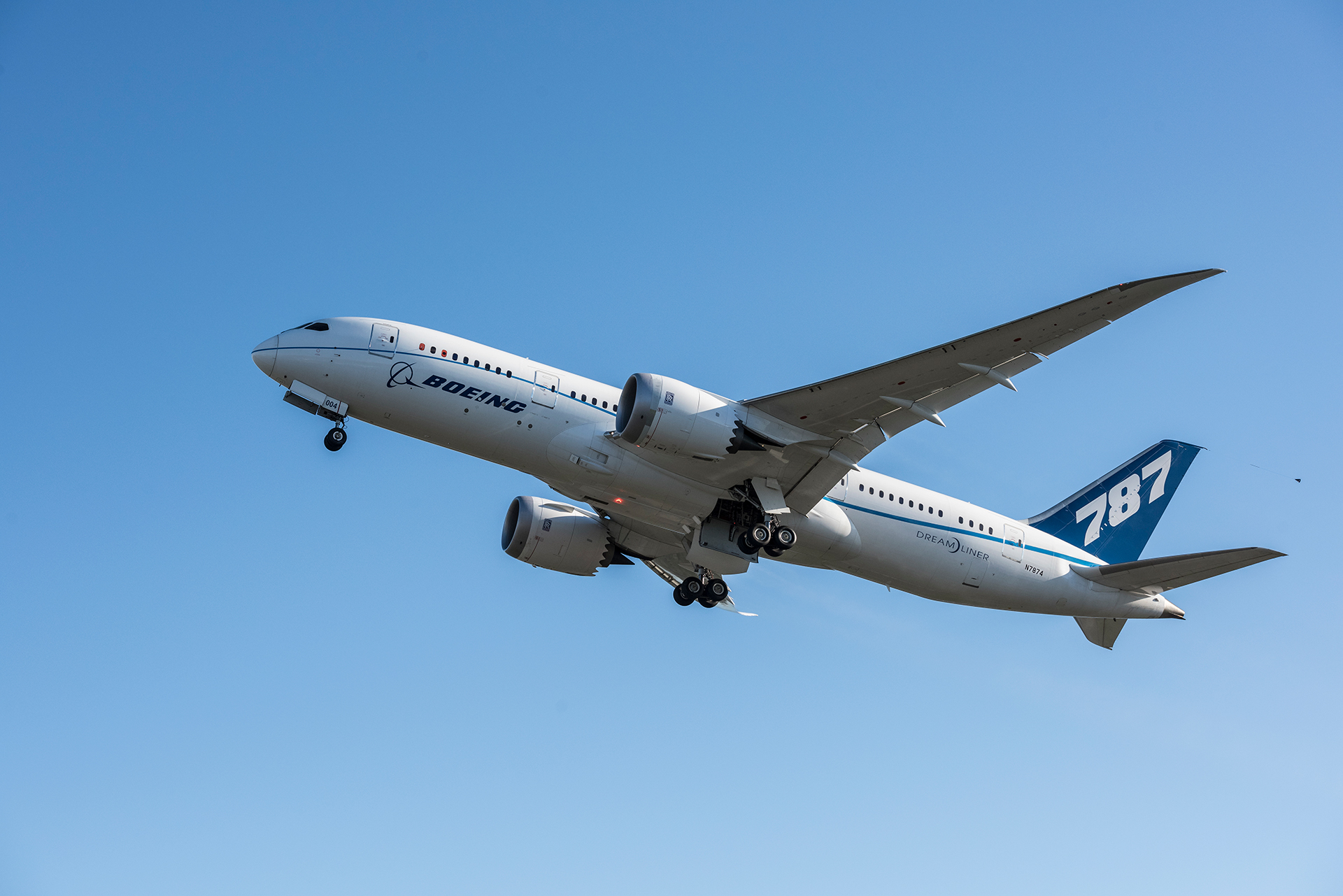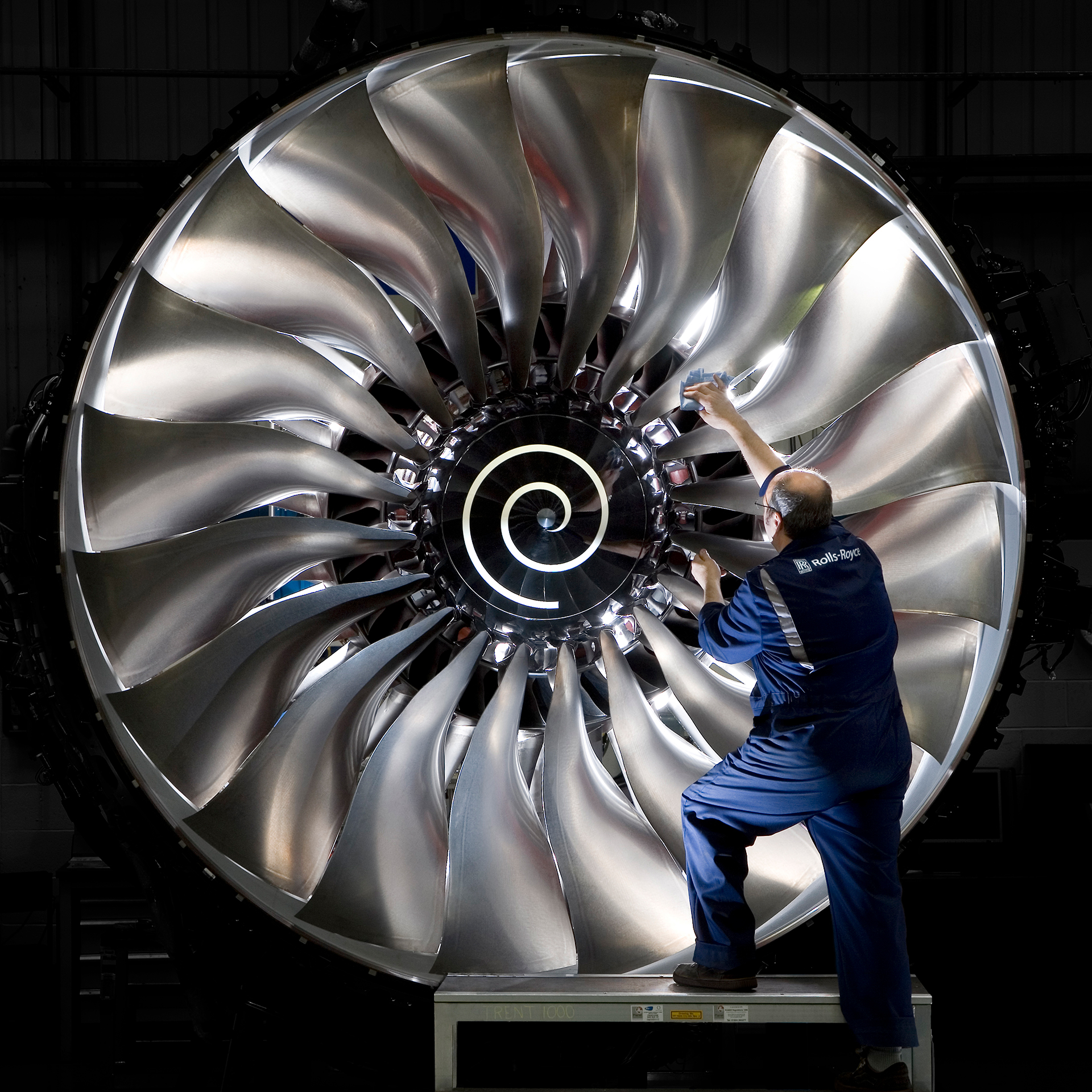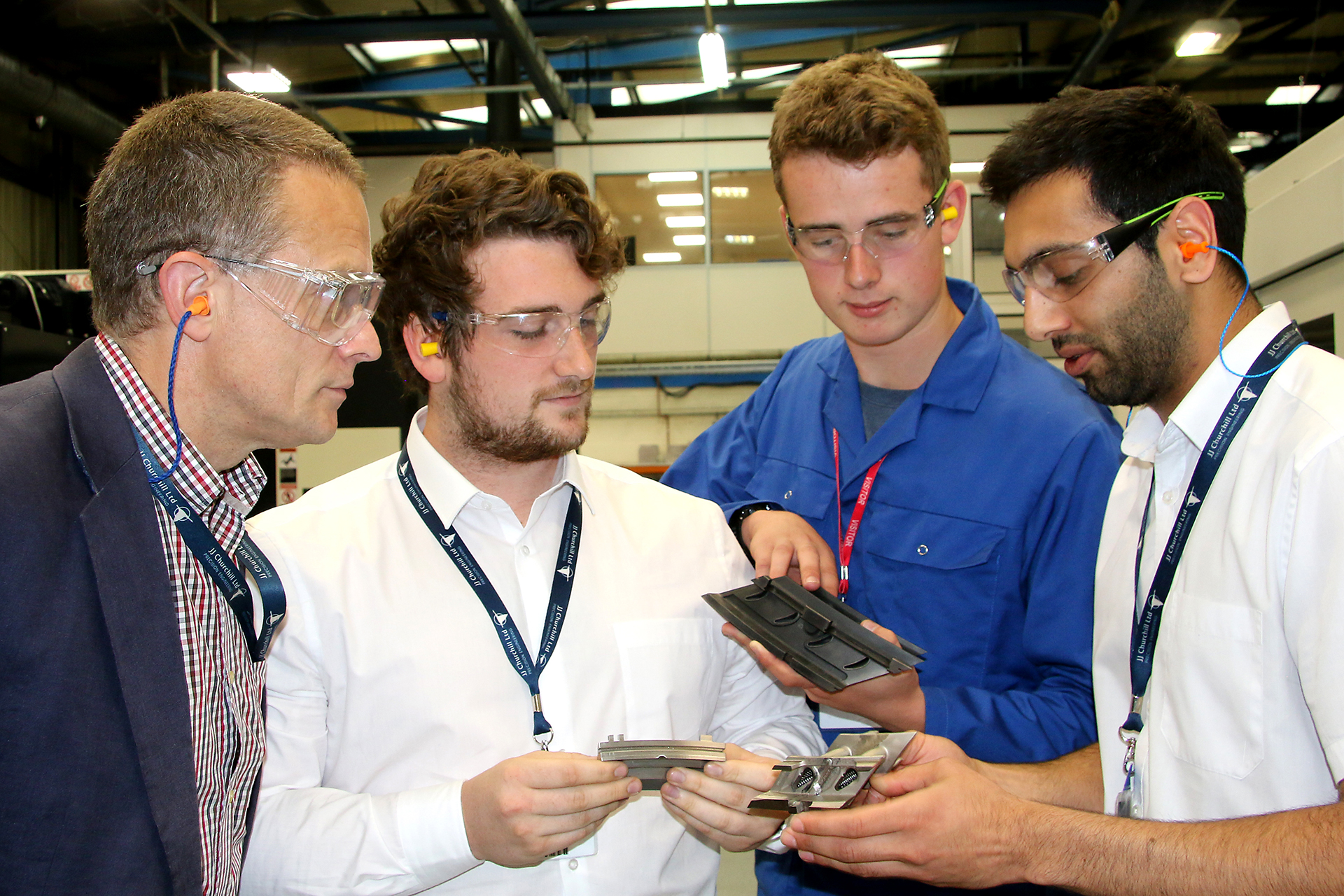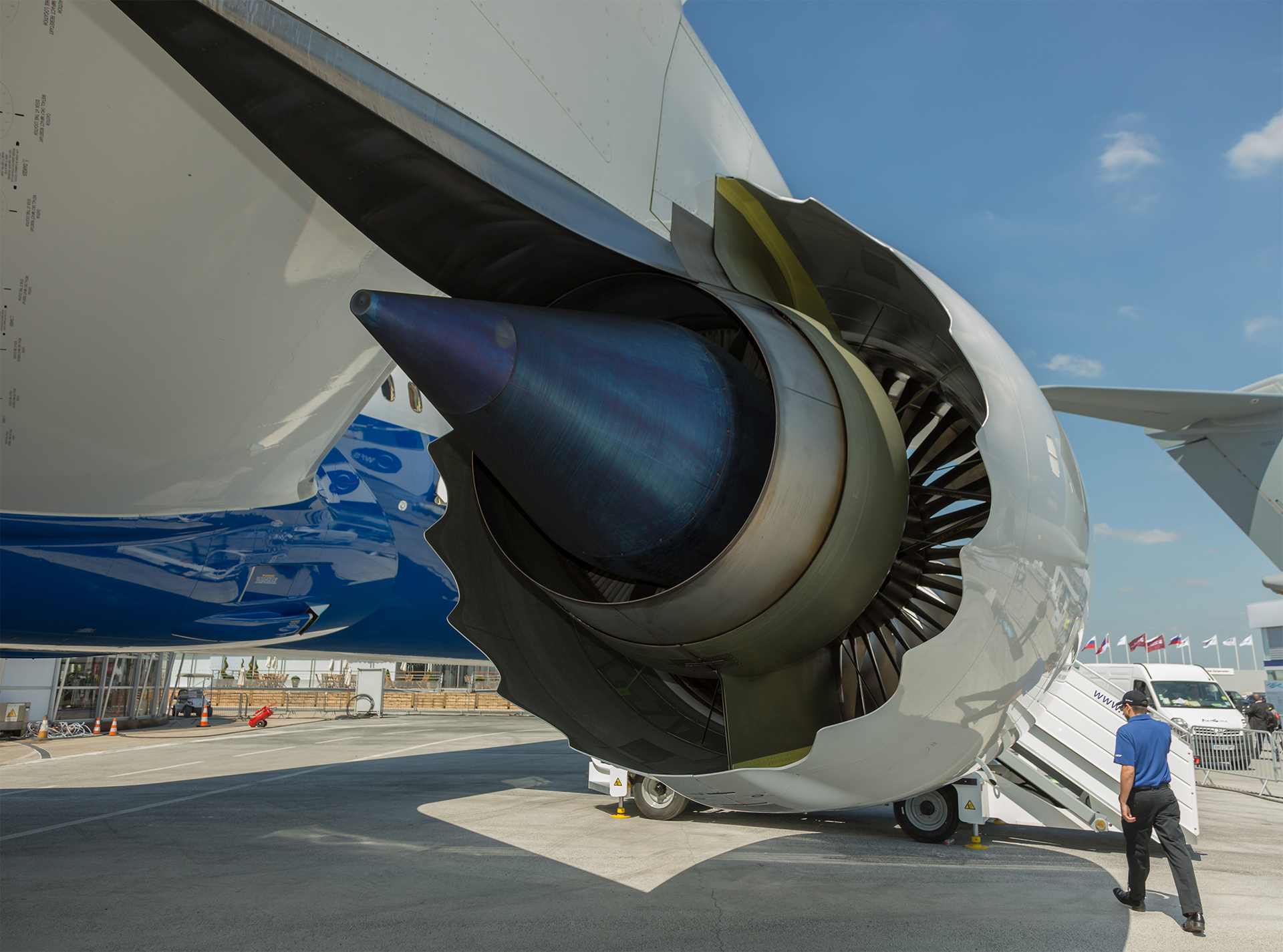Above: Andrew Churchill says his aerospace components company is a good example of a “niche” manufacturer that can handle complexity and work to close tolerances
With Brexit-related uncertainty overshadowing the UK economy, would you bet your company’s future on a new product area in one of the world’s most technologically demanding industries? That’s what Andrew Churchill did with his family-owned aerospace business – and the gamble seems to be working.
Churchill is executive chairman of JJ Churchill, based near Leicester. It makes key parts for jet engines and is an important supplier to Rolls-Royce, the big British aerospace manufacturer.
Since 2016, JJ Churchill has invested £10m in its growth programme. It plans to double annual sales over the next two years, on the back of orders stretching to 2029 of £210m, mainly from Rolls-Royce and Safran, the French aeroengine maker.
Central to Churchill’s plans is building on the technical prowess of his company’s 160 employees, with an emphasis on recruiting young people.
The company has 10 apprentices, mainly in their 20s, and on five each year. Churchill is an adviser or governor of three schools in the Midlands and is on the steering board of the 5 Per Cent Club, a group of UK companies promoting apprenticeships.
“Giving teachers and school pupils an accurate view of UK manufacturing is vital if companies such as ours are to recruit the workforce we will need for the next 20 years,” he says. This reflects the agenda of Made Here Now, which was established to showcase UK manufacturing and highlight the opportunities it offers to young people.
If the plans work, Churchill thinks that by 2022 the company could employ 200, up from 90 a decade ago.
The 50-year-old says his company is a good example of a UK “niche” manufacturer, “involving complexities of tolerances, materials or geometries”. He adds: “The businesses aren’t necessarily the cheapest. But they compensate by being innovative and offering superlative service.”
JJ Churchill’s most important customer – Rolls-Royce – plays a crucial role in UK manufacturing. Besides employing more than 20,000 people in Britain, the company has roughly 2,300 UK suppliers. It buys parts and services from them worth some £2.3bn annually – about a third of its global purchase bill.
Rolls-Royce – which has a reputation for tight management control and rarely discusses its suppliers either in Britain or elsewhere – has recognised JJ Churchill with a series of technology awards. The company – set up in 1937 by Andrew Churchill’s grandfather - is among a small number of preferred suppliers for several of Rolls-Royce’s families of small engines that power corporate jets.
JJ Churchill is playing a leading role in remedial work on compressor blades for Rolls-Royce’s Trent 1000 engines that power the Boeing 787 Dreamliner. Rolls-Royce discovered in 2018 that some of the blades on these engines were wearing quicker than had been anticipated.
 Technical problems with fan blades have grounded some of Boeing's 787 Dreamliner jets and led to an expensive repair programme
Technical problems with fan blades have grounded some of Boeing's 787 Dreamliner jets and led to an expensive repair programme
Due to the mishaps with the Trent 1000, Rolls-Royce faces a £1.6bn bill to pay for the remedial programme (including compensation to affected airlines) in the four years to 2021. The problems have grounded dozens of the aircraft and annoyed airlines such as BA and Virgin that operate the Dreamliner.
In an update in August 2019, Warren East, Rolls-Royce’s chief executive, said the engine issue was still “causing a number of our customers significant disruption”.
Apart from JJ Churchill, a handful of other companies – only one of which is also based in Europe – are working on the programme to produce a new higher-durability form of the compressor blades that power the Trent 1000. The UK company’s work on this programme is a strong indicator of its technological prowess – even though it provides only a modest amount of revenue.
JJ Churchill’s key niche is making metal blades for jet engines. These fit into the compressor or turbine of a jet engine and play a central role in providing thrust for the aircraft.
 JJ Churchill is a key supplier of components for Rolls-Royce's aircraft engines- some of Britain’s most advanced manufactured products
JJ Churchill is a key supplier of components for Rolls-Royce's aircraft engines- some of Britain’s most advanced manufactured products
The blades operate under immense stress. Each can be just a few centimetres long. Yet they withstand forces equivalent to a weight of about 10 tonnes (equivalent to two adult elephants) hanging off them.
In 2016 JJ Churchill decided to stop making compressor blades for aircraft engines (and other types of gas turbine, for example for power generation) and concentrate solely on turbine blades for aerospace.
“We needed to move up the ‘technology curve’,” says Churchill. “Compressor blades are more straightforward to manufacture and at greater risk of becoming commoditised. Though challenging and risky, from a strategic perspective, turbine blades seemed the way to go.”
Behind the strategy lie the differences between the two types of blade. Compressor blades “squeeze” air to increase its pressure. The air is then mixed with fuel and ignited, with the resulting hot gases powering the engine’s turbine blades. These are generally smaller than compressor blades but must withstand greater stresses and extremes of temperature.
As a result, turbine blades have more exacting specifications. The £1,000 cost of a typical turbine blade could be twice that of a comparable compressor blade.
Because they involve more technical challenges, fewer manufacturers globally compete in the market for turbine blades, compared with compressor blades.
 Andrew Churchill (left) is planning a big increase in his company’s sales, helped by a strong apprentice intake
Andrew Churchill (left) is planning a big increase in his company’s sales, helped by a strong apprentice intake
“Once we decided on this route it meant we had to invest a lot in new machines to make the higher specification blades. We felt that the company had the technological capability to make a success of the move and it would eventually lead to new markets and higher sales,” says Churchill.
According to Churchill’s plans, his company’s forecast sales this year of some £29m should rise to about £60m in 2021/22, with two thirds of the total coming from turbine blades, up from zero three years ago.
The work JJ Churchill is doing on the Trent 1000 engines’ compressor blades to some degree diverts the company from its new focus on turbine blades. But the company sees it as a highly worthwhile exercise not least because it demonstrates a high level of capability for a medium-sized company. In this project, Rolls-Royce’s engineers designed the new blades but left JJ Churchill to decide how to make them.
The manufacturing process involves machining high-strength pieces, made from titanium-based alloys, with accuracy of up to 6 micrometres.
“Our job was to work out how to make the blades efficiently and ensure they operate as designed,” says Churchill.
Rolls-Royce chief seeks innovation boost
.jpg) Rolls-Royce is one of the world’s top three makers of aero-engines
Rolls-Royce is one of the world’s top three makers of aero-engines
Rolls-Royce must show a more “innovative spirit” if it is to stay competitive in the 21st century, according to Warren East, the aero-engine company’s chief executive.
East acknowledged that Rolls-Royce had a reputation for being “slow and inflexible” in introducing new ideas. It had to change, he said, but not at the expense of jeopardising the effort to ensure its engines were ultra-safe and reliable.
“We must deploy an innovative spirit. It’s important not to get stuck into too much technology and engineering [at the expense of being alive to new commercial opportunities].”
Despite a cost cutting programme announced in 2018 that has meant big cuts in its workforce, Rolls-Royce has continued to recruit large numbers of young people. The company has 650 apprentices going through its UK schemes, making it one of Britain’s biggest apprenticeship providers: in 2018, it took on 319 graduates globally and 450 apprentices.
Before East joined Rolls-Royce, he was chief executive of ARM, a Cambridge-based company which is a global leader in designing semiconductors.
Speaking at a meeting of the Bessemer Society, which represents high-tech manufacturers, East said it was important to recognise the difference between Rolls-Royce and other technology-based businesses such as ARM, selling in less safety-critical sectors.
 A close-up of the Trent 1000 engine, the subject of a £1.6bn remedial programme
A close-up of the Trent 1000 engine, the subject of a £1.6bn remedial programme
“We [Rolls-Royce] are in a regulated industry [aerospace] where safety is paramount. It is 10 times less risky to fly today than it was 50 years ago. The engineering capabilities of companies like Rolls-Royce have had a role in this.”
However, Rolls-Royce had to temper this cautious stance by introducing business in a way more like technology entrepreneurs running small businesses.
“We have to find the right balance between being a regulated business and the less constrained world of the start-up,” East said.
Rolls-Royce is one of the UK’s most important manufacturers and among the few to be a key player in a large industry. With Pratt & Whitney and General Electric of the US, it is one of the three biggest makers of engines powering the world’s airline fleet. In 2018 Rolls-Royce employed 23,000 people in the UK out of a global workforce of 54,500. Starting a process announced in 2018, it is reducing its overall headcount by 4,600, two thirds of the job losses coming from the UK.
.jpg) The aerospace supplier is a big recruiter of young people with technical skills
The aerospace supplier is a big recruiter of young people with technical skills
Before East joined Rolls-Royce in 2015 he spent 12 years as head of ARM, whose designs are used in many of the key microchips in mobile phones. ARM – now owned by Softbank of Japan – is one of the few UK technology businesses to become a global leader over the past 20 years.
Central to Rolls-Royce’s innovation effort are ideas to develop new power sources for aircraft based on electricity, generated from onboard batteries or innovative sources such as fuel cells. This could be important in reducing the aerospace industry’s large carbon emissions.
“As a society we must wean ourselves away from our 200-year history of setting fire to hydrocarbons. I’m pleased to say the world has woken up to the need to move to other forms of energy generation,” East said.
Rolls-Royce is working with the European aircraft maker Airbus on a new “hybrid-electric” demonstrator aircraft programme, based on a mix of electric power and conventional oil-based fuel. It also has several all-electric research projects.
